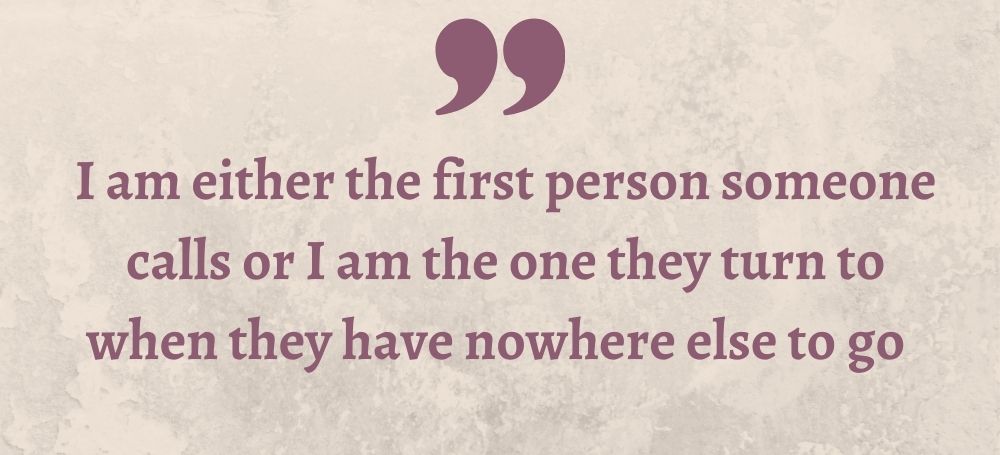When we start looking within we begin to realise that there are many aspects to ourselves, those that we are aware of and those that we are not aware of. These parts of ourselves that we are not aware of are known as the ‘shadow’. The more we are unaware of the shadow the more it can rule us from the unconscious. To be clear the shadow is not always negative hidden parts of ourselves, but can be positive parts of ourselves that we just can’t see. Thoughts and beliefs can prevent us from seeing the positive shadow aspects, for example if we have low self esteem we will be less able to see our capabilities. On the whole when we are talking about the shadow we tend to be referring to the parts of ourselves that we find hard to accept and on the whole these are the ‘darker’ more negative aspects for example anger, rage, fear, jealously, unkindness, judgement, cruelty, selfishness, suspicion, arrogance, meanness etc.
So to be clear we have our conscious mind and who we like to think we are, and if we don’t delve into ourselves, there will be a shadow aspect that is to say, who we actually are. By developing self awareness we begin to sit between these two parts of ourselves as the observer and we start to understand how the shadow aspects affect the way we see things and how we behave.
Carl Jung explains this beautifully when he says,
“To confront a person with his shadow is to show him his own light. Once one has experienced a few times what it is like to stand judgingly between the opposites [as the observer] one begins to understand what is meant by the self. Anyone who perceives his shadow and his light simultaneously sees himself from two sides and thus gets in the middle.”
Once in the middle of who you think you are and who you actually are you are better able to navigate through the shadow. Awareness heals. So by becoming aware of your own shadow aspects you begin to choose how you respond to situations, rather than simply reacting from a deep unconscious part of yourself.
If we are not aware of our shadow and if we are not positioned in the middle within ourselves then it is very likely that all the parts of ourselves that remain in the shadow (and are unacceptable to us) get projected onto those around us.
Carl Jung describes projection as:
“A man who is unconscious of himself acts in a blind, instinctive way and is in addition fooled by all the illusions that arise when he sees everything that he is not conscious of in himself coming to meet him from outside as projections upon his neighbour.”
This means that when we don’t accept our shadow we will see it in those around as. All the parts we do not accept in ourselves we will see in others. This is called ‘projection’ like a film that is projected onto a screen we project our shadow onto the people around and we see our own ‘film’ as we look at them. We are unable to see other people clearly, or we over focus on the negative traits we seen in them as we unconsciously recognise them as our shadow aspects. This means that the people around us have all sorts of good and bad traits but we over focus on the things we are projecting, the projection colours our view of the other people around us so we focus on things like, ‘He is so selfish’, ‘She is so judgemental’, ‘I can’t stand the way he blames everyone all the time’, ‘I can’t believe how arrogant he is’.’There is something wrong with him’,’She makes me feel so angry’.’Its not me, its them’.
It would seem to be the case that the more something in particular riles you in another, then the more likely it is in fact one of your own shadow aspects. In this situation you are correctly identify a shadow aspect, but wrongly pointing the finger at another, when in actual fact that very characteristic is one for you to work on in yourself. With this in mind it is useful to acknowledge the things you find particularly annoying in others and then look within yourself. You can ask questions like ‘Where am I really angry?’, ‘Where am I really selfish?’, ‘Where do I blame others?’, ‘When am I judgemental?’, ‘Do I think there is something wrong with me?’, ‘Is it me, not them?’. If we ask ourselves these questions and think with honesty of times that we may have had selfish, judgemental, arrogant or blaming thoughts and look to the shadow parts of ourselves that raise those feelings then we can start to accept with love those parts of ourselves and start to heal.
It goes without saying, of course, that at times we all find others irritating and it doesnt mean everything you see is a projection of your shadow. But rather pay attention to themes that either keep on repeating in your life or things others do or say that really get to you. The more of an emotional response you have to something in another person the more of a clue you have that it is more than likely one of your shadow traits.
How do I explore my shadow?
First of all to explore your shadow all you need to be is willing. All you need to do is accept that we all have a shadow aspect and within the shadow are good and bad traits. We have talked about standing in the middle of yourself, a great way to do this is to meditate.
I imagine we are all familiar (however vaguely) with meditating. When we meditate we sit quietly and focus on our breath and we observe. We observe the sounds around us, the birds outside, the feeling of the chair we are sitting on, we also observe our thoughts. So follow me on this, if can can observe our thoughts then we are not our thoughts.
We are in fact the ‘middle part of ourselves’ the observer. As the observer we can start to sit alongside our thoughts (which are generated by our unconscious) and we can learn to respond to our thoughts rather than automatically having a feeling response such as anger, fear, worry, annoyance etc. We can say, ‘How interesting’ when something pops into our mind, or we can say,’Thank you for letting me know’ when a worried thought pops in. We do not have to act on our thoughts. The way we feel (worried about something) is based on a thought so if we can meet that thought with, ‘Thank you for letting me know’ we can begin to override the unconscious constant stream of thoughts and we can start to really understand who we are and direct ourselves in the direction of who we want to be. If we can meet all thoughts with curiosity then we can feel neutral around our thoughts and we can step off the emotional rollercoaster engendered by our unconscious stream of thoughts that result in any number of feelings. If we sit in the middle we can see a thought pop into mind and ask ourselves, ‘how do I feel about that, is it true?’
If we do this regularly in meditation practice then we find that we can be in the observer part of our mind throughout the rest of our day. It becomes a part of who we are. We are no longer driven by our unconscious and our shadows which feed our thoughts and result in how we feel. We can sit in the middle and chose which thoughts to respond to and which thoughts to ‘Thank’ and then let go.
So in conclusion to explore our shadow aspects, first we need to be willing, then we need to love and accept all our shadow aspects. The more we can embrace all parts of ourselves the less invested we will be in projecting those parts we do not accept onto others. This can only result in better relations with those around us.
The more we are able to accept all parts of ourselves, the more we will be able to accept those around us. The more we love ourselves to deeper and deeper levels, the more we will be able to love those around us.


 Clare. Can you help?
Clare. Can you help?  Gaslighting
Gaslighting  Anger as a messenger
Anger as a messenger